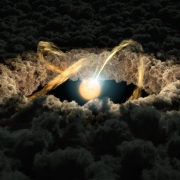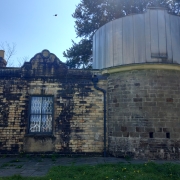Friday 5th December 2025 Thomas Harriot, Renaissance Astronomer, Navigator and Mathematician
Anthony Symes, Herschel Society
Friday 5th September 2025 7.30 pm in the BRLSI, Bath, and on Zoom
The image is a portrait, supposedly of Thomas Harriot, which is at Trinity College, Oxford.
Thomas Harriot was not only the first in England to be documented as pointing a telescope at the night sky and drawing the Moon (just before Galileo in Venice) but was also a navigator who had sailed to North America to set up the first English colony at Roanoke Island, had learnt the Carolina Algonquian language and had written a book about what he found: A Briefe and True Report of the New Found Land of Virginia. Later he went on to make a study of sunspots, and he left numerous manuscripts which paved the way forward to Newton in Mathematics and Optics.
When a portion of court intrigue and Harriot’s connections with other key Elizabethan and Jacobean figures is added in, the result is a story which needs to be told.
Tony Symes is keen, as an enthusiastic amateur, to talk about this all too often forgotten scientist and reveal the background against which he was operating.
This is our second contribution to the 2025-26 BRLSI Renaissance theme.
Anthony Symes CEng is a committee member of the Herschel Society and chairs the Programme Subcommittee at the BRLSI. He graduated in Physics at the University of Sussex and worked in IT, mainly on supervisory control systems.
A video recording of this lecture will be available shortly.











